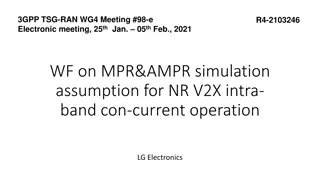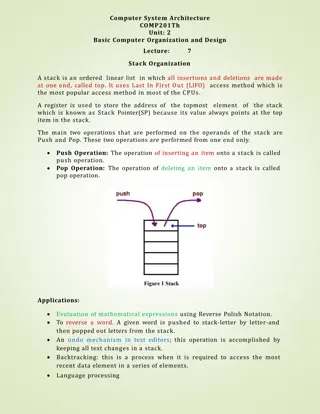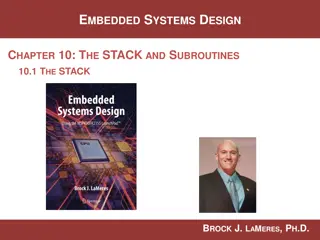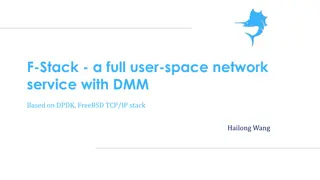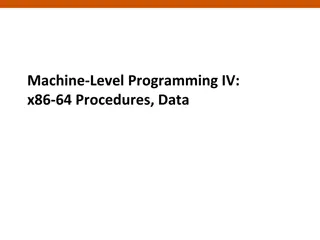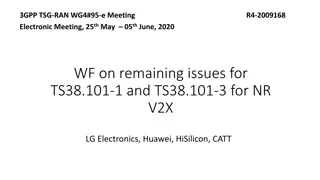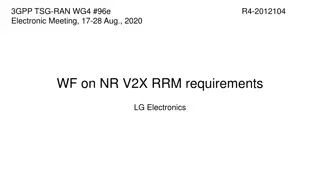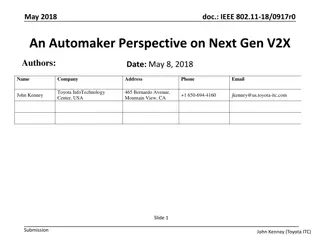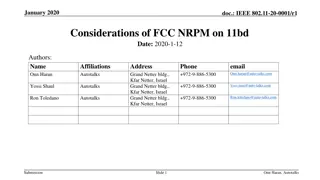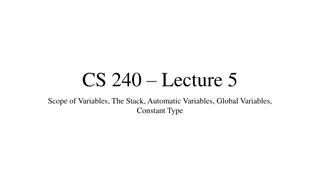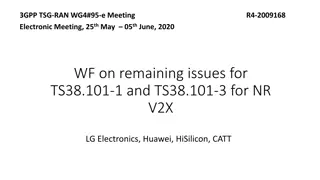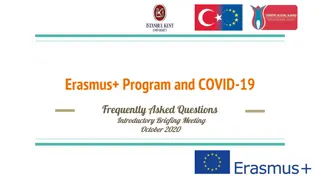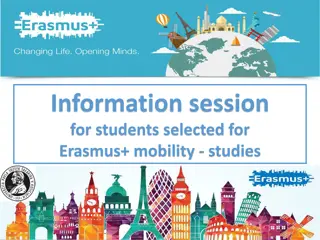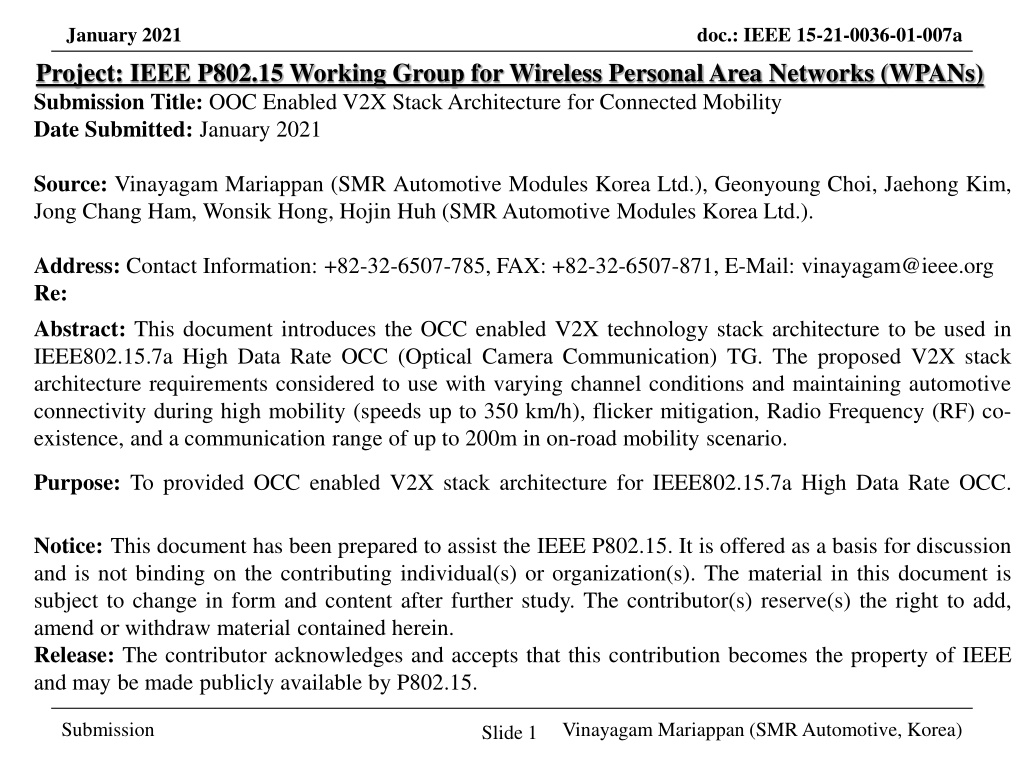
OOC Enabled V2X Stack Architecture for Connected Mobility
"Explore the OCC enabled V2X technology stack architecture for IEEE802.15.7a high data rate OCC, addressing automotive connectivity challenges during high mobility. Learn about the evolving automotive landscape, V2X data communication standards, and the significance of connectivity-enabled services versus onboard sensors. Stay updated on the latest advancements in automotive connectivity and mobility solutions."
Download Presentation

Please find below an Image/Link to download the presentation.
The content on the website is provided AS IS for your information and personal use only. It may not be sold, licensed, or shared on other websites without obtaining consent from the author. If you encounter any issues during the download, it is possible that the publisher has removed the file from their server.
You are allowed to download the files provided on this website for personal or commercial use, subject to the condition that they are used lawfully. All files are the property of their respective owners.
The content on the website is provided AS IS for your information and personal use only. It may not be sold, licensed, or shared on other websites without obtaining consent from the author.
E N D
Presentation Transcript
January 2021 Project: IEEE P802.15 Working Group for Wireless Personal Area Networks (WPANs) Submission Title: OOC Enabled V2X Stack Architecture for Connected Mobility Date Submitted: January 2021 Source: Vinayagam Mariappan (SMR Automotive Modules Korea Ltd.), Geonyoung Choi, Jaehong Kim, Jong Chang Ham, Wonsik Hong, Hojin Huh (SMR Automotive Modules Korea Ltd.). doc.: IEEE 15-21-0036-01-007a Address: Contact Information: +82-32-6507-785, FAX: +82-32-6507-871, E-Mail: vinayagam@ieee.org Re: Abstract: This document introduces the OCC enabled V2X technology stack architecture to be used in IEEE802.15.7a High Data Rate OCC (Optical Camera Communication) TG. The proposed V2X stack architecture requirements considered to use with varying channel conditions and maintaining automotive connectivity during high mobility (speeds up to 350 km/h), flicker mitigation, Radio Frequency (RF) co- existence, and a communication range of up to 200m in on-road mobility scenario. Purpose: To provided OCC enabled V2X stack architecture for IEEE802.15.7a High Data Rate OCC. Notice: This document has been prepared to assist the IEEE P802.15. It is offered as a basis for discussion and is not binding on the contributing individual(s) or organization(s). The material in this document is subject to change in form and content after further study. The contributor(s) reserve(s) the right to add, amend or withdraw material contained herein. Release: The contributor acknowledges and accepts that this contribution becomes the property of IEEE and may be made publicly available by P802.15. Submission Vinayagam Mariappan (SMR Automotive, Korea) Slide 1
January 2021 doc.: IEEE 15-21-0036-01-007a Contents Connectivity in the Automotive / Mobility V2X Stack Architecture V2X Data Communication Standards OCC Enabled V2X Stack Architecture Conclusion Submission Vinayagam Mariappan (SMR Automotive, Korea) Slide 2
January 2021 doc.: IEEE 15-21-0036-01-007a Connectivity in the Automotive / Mobility Automotive / Mobility landscape is undergoing a significant transformation driven by connectivity Connectivity on Mobility is a critical piece of automotive evolution that will unlock new capabilities such as safety alerts, enhanced traffic management, and next-gen capabilities (e.g., ADAS, Autonomous). Connectivity-enabled services in Mobility will support a proliferating, future set of mobility models and continued evolution in the connected vehicles, which requires communication standards to ensure data interoperability and security to maximize the benefits of V2X (vehicle-to-everything) infrastructure. Wi-Fi DSRC (Dedicated Short-Range Communications ), C-V2X (Cellular V2X), and 5G C- V2X standards have risen as the primary candidates for V2X data communication. Submission Vinayagam Mariappan (SMR Automotive, Korea) Slide 3
January 2021 doc.: IEEE 15-21-0036-01-007a Connectivity in the Automotive / Mobility Cont. Connectivity-Enabled Services Vs On-Board Sensors-Enabled Services Submission Vinayagam Mariappan (SMR Automotive, Korea) Slide 4
January 2021 doc.: IEEE 15-21-0036-01-007a Connectivity in the Automotive / Mobility Cont. Impact on Automotive / Mobility Industry Communication Standards in V2X Evolution Player across the Automotive, Mobile, and Telecom industries are driving investment / innovation in connectivity / sensors for vehicles, infrastructure, and vehicle networks on the path towards next-generation V2X mobility. Growth of Smart Mobility Incumbents and new entrants are experimenting with novel mobility models (e.g. ride share) which are enhanced by a V2X connectivity environment, with the potentials to unlock new capabilities (e.g., ADAS, Autonomous). Connected Ecosystem Development Driving a computing Applications in Mobility which offer added functionality for the in-vehicle experience, linkage to other connected ecosystems (e.g., connected home,), eventually surrounding vehicles, and connected on-road infrastructure . Submission Vinayagam Mariappan (SMR Automotive, Korea) Slide 5
January 2021 doc.: IEEE 15-21-0036-01-007a V2X Stack Architecture < V2X Stack Architecture > Sources(s): Red Chalk Group Analysis Submission Vinayagam Mariappan (SMR Automotive, Korea) Slide 6
January 2021 doc.: IEEE 15-21-0036-01-007a V2X Data Communication Standards Wi-Fi DSRC / IEEE 802.11p 3GPP C-V2X NR-Based 5G V-V2X Commercial Readiness Commercialized installed in Vehicles and Commercialization started Commercialization started Safety-related messages for local/close communication for V2V and V2I situations Supports (V2V, V2I, V2P) as well as node-to-network communication node-to-note Ability autonomous driving due to data volume, reliability and latency capabilities to support Illustrative Use Cases range (V2N) Data Volume: Data Ability capacity / throughput by leveraging existing mobile infrastructure to drive high Expected to have order of magnitude increases in data volume and device capacity per geographical area Low-to volumes moderate data Transmission Characteristics Range / Reliability: Short range (~ 1 km) communication limits the possibility interference Strong data reliability , even in high environment High advantage on line-of- sight communication range density of data Latency: Transmission duration is fixed at 1ms Low Latency (2ms) for basic safety messages Expected to reach 1ms for V2X communication Submission Vinayagam Mariappan (SMR Automotive, Korea) Slide 7
January 2021 doc.: IEEE 15-21-0036-01-007a OCC Enabled V2X Stack Architecture Energy Efficiency / Traffic Flow ADAS / Autonomous Driving Emergency / Safety Alerts Navigation / Mapping Parking Traffic Alerts Server / Cloud Network DSRC / IEEE 802.11 3GPP C-V2X NR-Based 5G C-V2X OCC-V2X / IEEE 802.15 Vehicles Camera / Lights Roadside Unit / Beacon Camera / Security System On-Road Signage Traffic Light On-Road infrastructure Person / Pedestrian Other Vehicles Phone < OCC Enabled V2X Stack Architecture > Submission Vinayagam Mariappan (SMR Automotive, Korea) Slide 8
January 2021 doc.: IEEE 15-21-0036-01-007a OCC Enabled V2X Stack Architecture Cont. V2X OCC Link Characteristics Carries 300 THz of license-free bandwidth carried on visible wavelengths . Low-to moderate data volumes Short range (~ 200 m) communication limits the possibility of data interference Low Latency for basic safety and alert messages Provides flexible, secure, and safety communication. Does not required additional automotive cybersecurity methods in connected mobility. Submission Vinayagam Mariappan (SMR Automotive, Korea) Slide 9
January 2021 doc.: IEEE 15-21-0036-01-007a Conclusion Proposed the OOC Enabled V2X Stack Architecture for Connected Mobility. This proposed V2X stack architecture will act as a central driver in the enhancement of mobility through increased safety, value-added services, and advanced driving capabilities (e.g., ADAS, Autonomous, etc.). Discussed the different V2X Infrastructure Data Communication standards. This proposed OCC Enabled V2X stack design consideration helps to provide flexible, secure, and safety communication in an on-road mobility scenario through the OCC access link. Submission Vinayagam Mariappan (SMR Automotive, Korea) Slide 10




